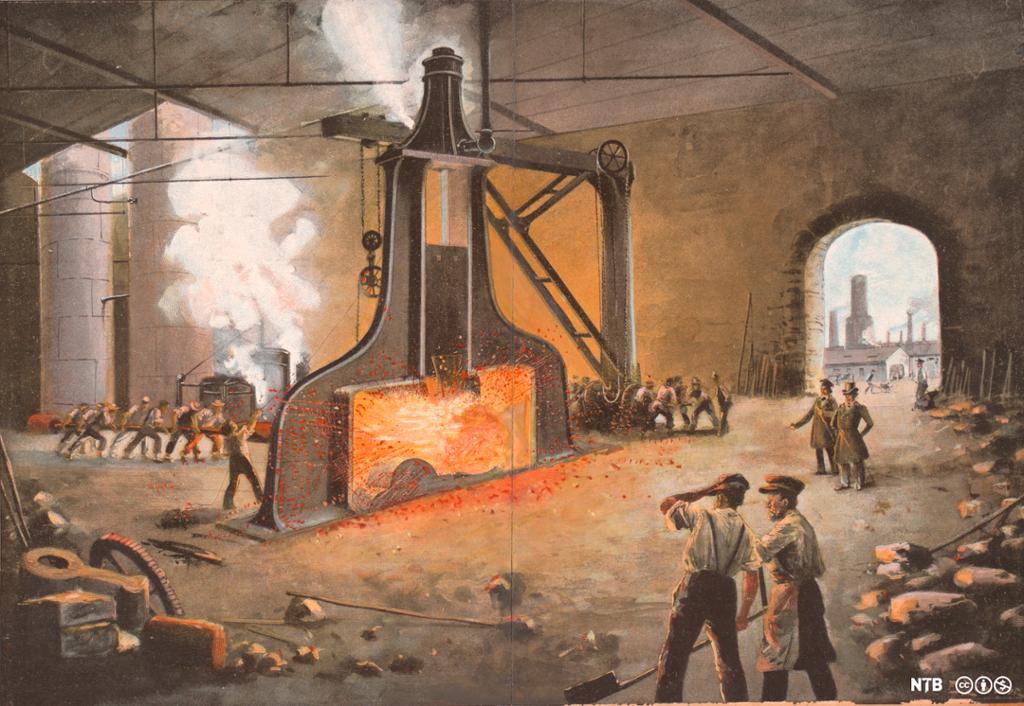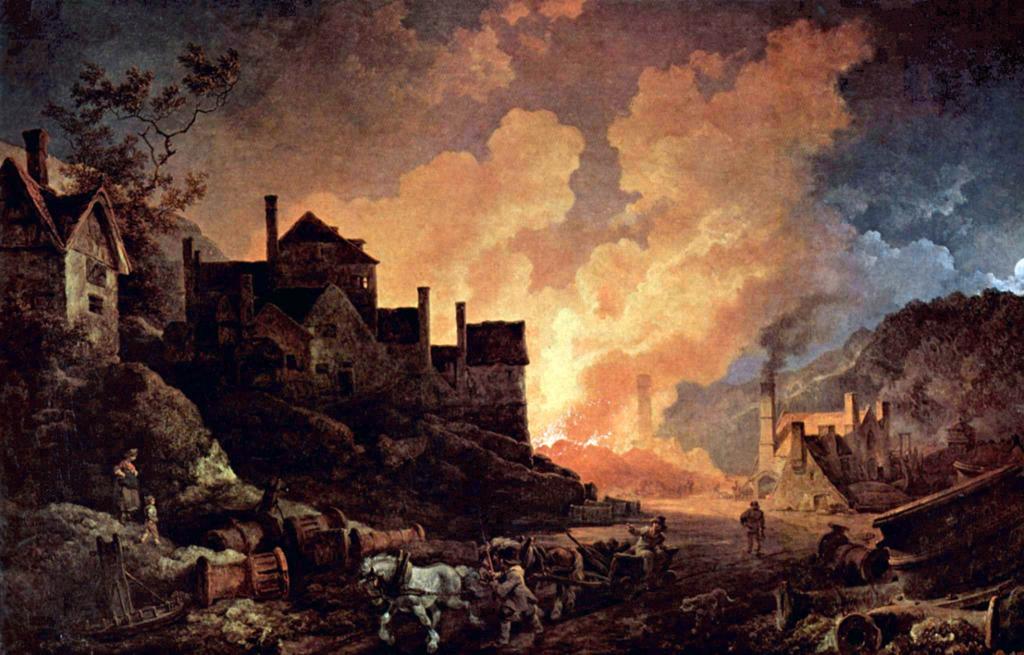The Industrial Revolution

Machines such as James Watt's steam engine, James Hargreaves's spinning machine, and George Stephenson's railroad locomotive are often highlighted as driving forces of the Industrial Revolution, and it is easy to assume that the Industrial Revolution was driven by invention.
The truth is more complex. While the inventions were important, they were only part of why the Industrial Revolution happened where and when it did. For example, we know that a steam engine was invented in Ancient Greece in the year 1 AD, but it was treated merely as a curiosity, and was given no practical use. It was a combination of several different factors that lead to the Industrial Revolution in England, such as the agricultural revolution, mercantilism, colonialism, capitalism, and natural resources.
Starting in the 17th century agricultural production in Britain was transformed. Agricultural practices such as crop rotation, selective breeding, and a more productive use of arable land meant that production was increased. Part of the Agricultural Revolution was the enclosure movement, which involved taking land that had been public property and privatising it to create larger units that could be more efficiently exploited. The changes meant that fewer workers were needed. The surplus workers had to look for employment elsewhere, so there was manpower that could be used in the factories. In addition, the more efficient farms produced enough food to sustain the factory towns and cities.
Britain was building an empire, and equipping a ship to travel to distant parts of the world was expensive. This led to a system of banking, credit, and insurance that could be exploited when the time came to build factories and develop industry. Like equipping a ship, building a factory cost a lot of money, and could require the cooperation of many investors. Many people in Britain were used to the idea of investing money to make money.
The colonies also provided raw materials for the factories, and the finished products could be sold there.
Britain had large deposits of iron and coal. Improvements and new inventions made it possible to exploit these resources: coal was used for energy, machinery required iron.

When new machines were created in one part of the production, it created a demand for improvements in other parts of the production. When spinning was improved, there was a demand for faster weaving. The demand for more machinery and more refined machinery led to demands for improvements in the production of metal. When there were more goods to transport, there was a demand for more efficient transportation.
Mercantilism was the idea that there are finite resources and wealth in the world and that countries are in competition to secure as much wealth for themselves as possible. Countries should earn money from exporting as much as possible, while at the same time spending as little as possible on import. These ideas justified the establishment of colonies, and going to war to protect or secure such colonies. This economic way of thinking was replaced by the idea of allowing free market forces to regulate production.
In 1776, the philosopher Adam Smith published a book called An Inquiry into the Nature and Causes of the Wealth of Nations. In the book, he suggests that the authorities should not attempt to regulate the market but instead put measures in place to ensure completely free trade. These ideas moved the UK away from protectionism towards sharing its industrial advances with the world. The Industrial Revolution soon reached the whole world, changing it forever. The UK got strong competition, especially from Germany and the United States. Nevertheless, until World War I, the UK was the richest and most powerful country in the world.
Learn more about the industrial revolution:
Below, you will find links to more information about the industrial revolution.
Kids Britannica has an article about the Industrial Revolution where you can choose between three versions: 'for kids', 'for students', or 'for scholars': Link to article about the industrial revolution on britannica kids' website
History has several articles about the industrial revolution, here is a link to one of them: Article about the Industrial Revolution on the History's website
Khan Academy has an interesting course about the Industrial Revolution called 'The Modern Revolution': Link to course about the Industrial Revolution on Khan Academy's website
Relatert innhold
Learn more about the Industrial Revolution by working on these tasks.